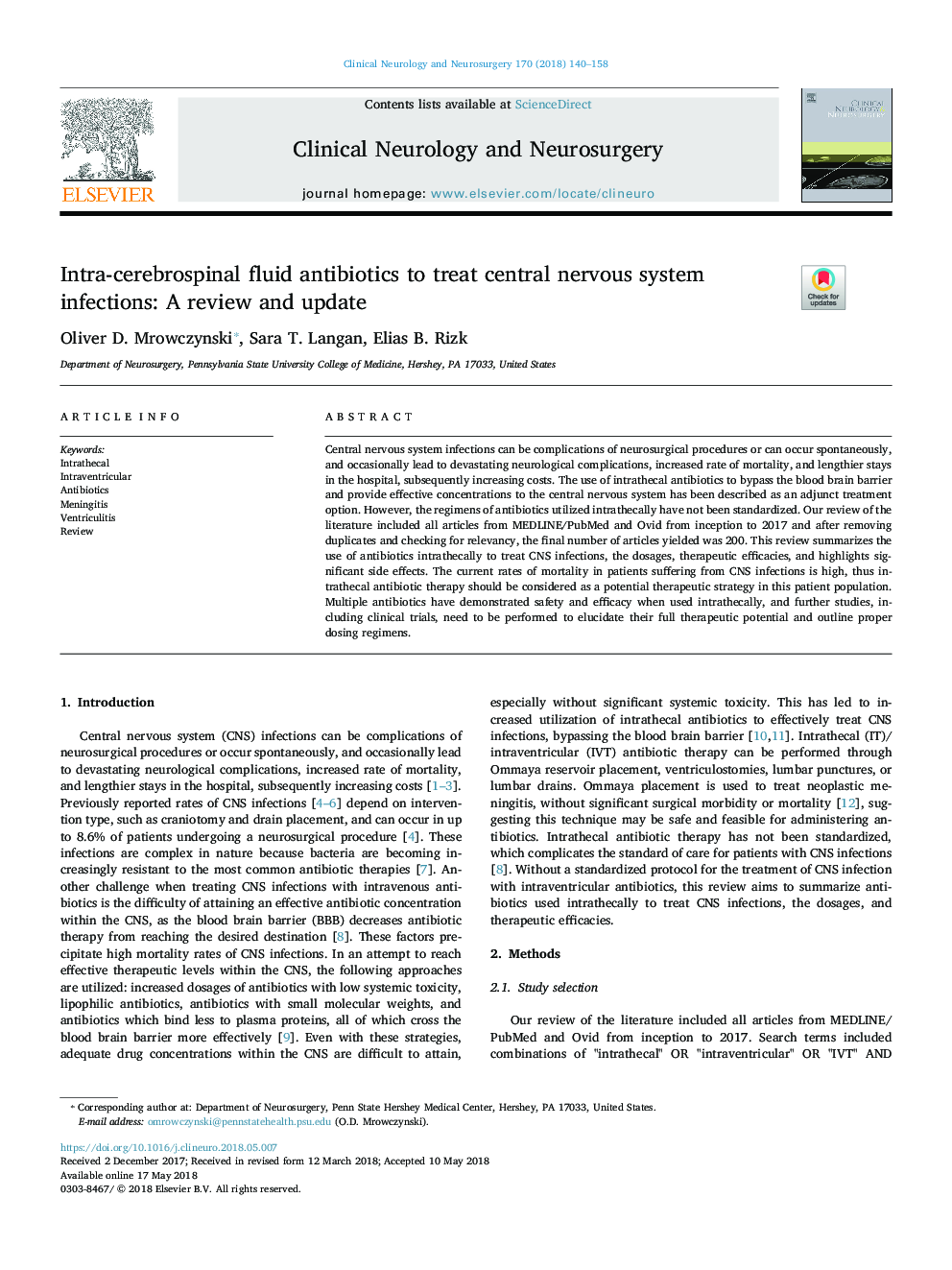| Article ID | Journal | Published Year | Pages | File Type |
|---|---|---|---|---|
| 8681745 | Clinical Neurology and Neurosurgery | 2018 | 19 Pages |
Abstract
Central nervous system infections can be complications of neurosurgical procedures or can occur spontaneously, and occasionally lead to devastating neurological complications, increased rate of mortality, and lengthier stays in the hospital, subsequently increasing costs. The use of intrathecal antibiotics to bypass the blood brain barrier and provide effective concentrations to the central nervous system has been described as an adjunct treatment option. However, the regimens of antibiotics utilized intrathecally have not been standardized. Our review of the literature included all articles from MEDLINE/PubMed and Ovid from inception to 2017 and after removing duplicates and checking for relevancy, the final number of articles yielded was 200. This review summarizes the use of antibiotics intrathecally to treat CNS infections, the dosages, therapeutic efficacies, and highlights significant side effects. The current rates of mortality in patients suffering from CNS infections is high, thus intrathecal antibiotic therapy should be considered as a potential therapeutic strategy in this patient population. Multiple antibiotics have demonstrated safety and efficacy when used intrathecally, and further studies, including clinical trials, need to be performed to elucidate their full therapeutic potential and outline proper dosing regimens.
Related Topics
Life Sciences
Neuroscience
Neurology
Authors
Oliver D. Mrowczynski, Sara T. Langan, Elias B. Rizk,
